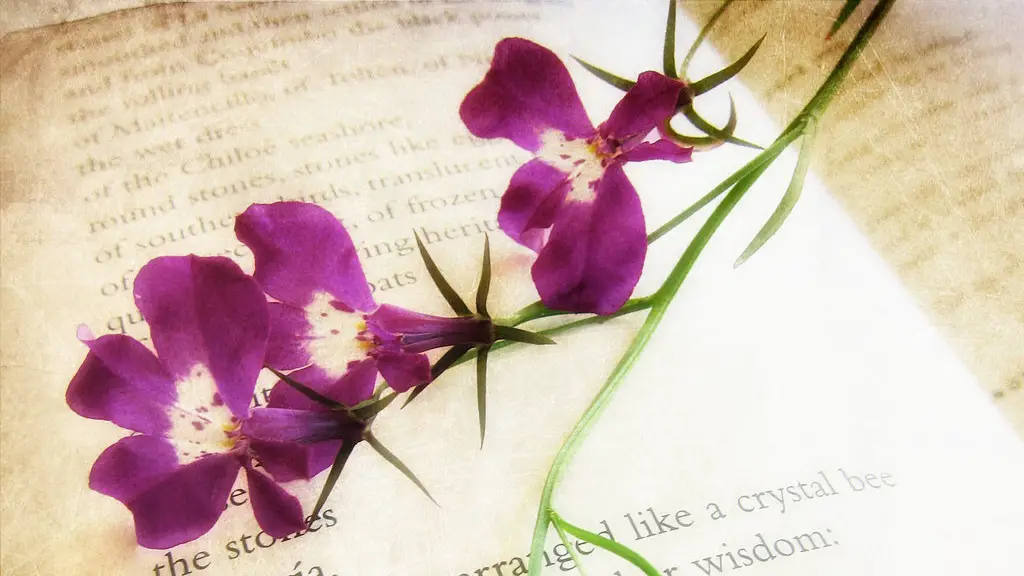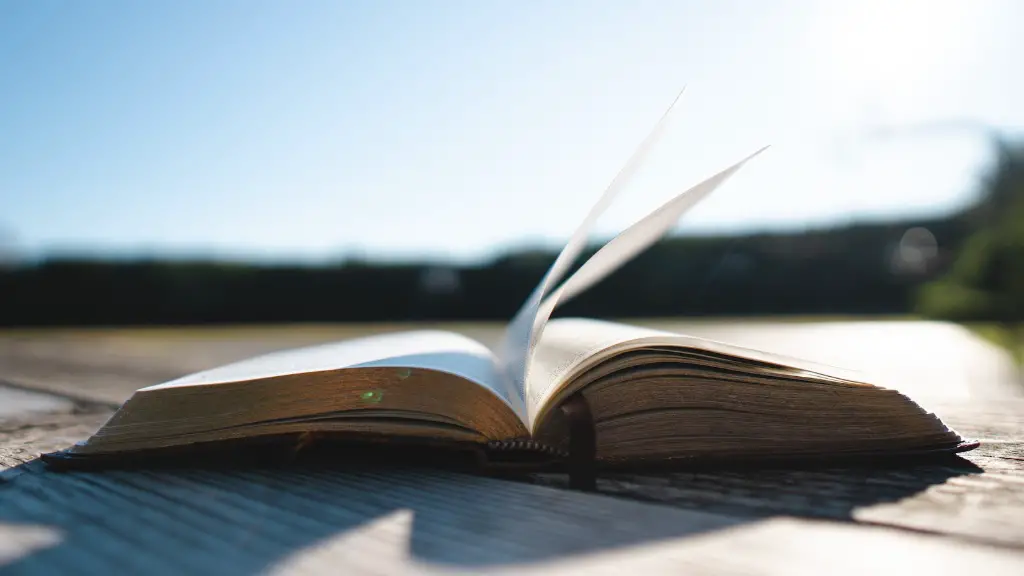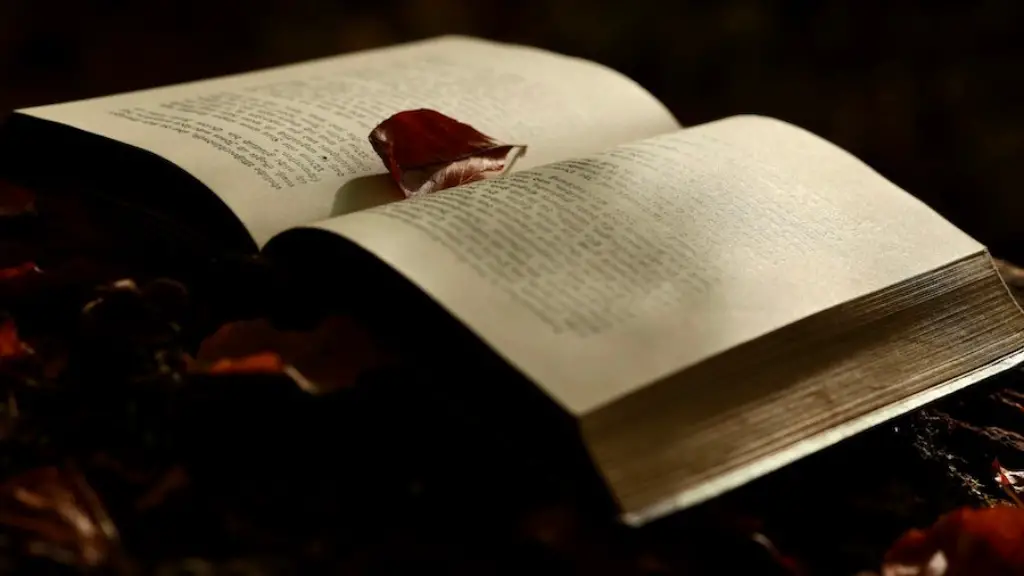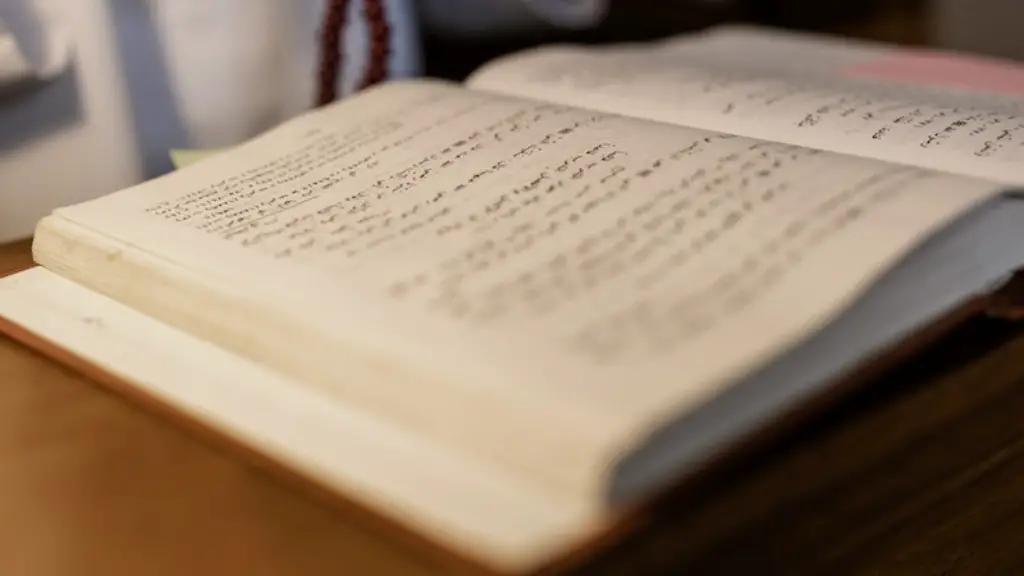A ballad is a form of poetry that has its origins in old European folk songs and modern music. Most ballads are written in a loose, accessible style with a story-like structure, usually concerning love and romantic relationships. Ballads typically make use of simple, informal language and typically have either narrative or dialogue-driven lyrics, although they can also be instrumental-driven.
The most important factor when it comes to defining a ballad is its structure. A ballad typically follows a pattern of alternating four lines (known as a stanza or quatrain) to make a short song. This pattern often follows an AABB rhyme scheme, where the first and third lines rhyme and the second and fourth lines rhyme. This structure helps to keep the poem engaging and easy to follow. In some cases, though, ballads may use other rhyme schemes, such as ABAB or even AAAA.
The most common themes in ballads are love, loss, heartbreak, and family relationships. The plot of a ballad often follows the traditional three-step structure: introduction-plot-conclusion. Characters in a ballad often have a clear character arc, where they begin in an unhappy state and eventually experience some form of transformation or journey of self-realization. This helps to make the poem more engaging and meaningful.
Ballads are unique in that they often contain a moral or lesson, expressed through symbolism. This helps the reader better understand the poem and take away more from the experience. Many ballads also feature a chorus or refrain which repeats throughout the poem, serving as a reminder of the main theme. These choruses can act as bridges between sections of a poem, helping to maintain the flow and keep the audience engaged.
When it comes to writing a ballad, the most important thing to remember is that it should tell a story. Ballad writers should focus on developing their characters, creating an engaging plot and including meaningful symbolism. The language should be accessible and easy to understand, with a conversational tone. Ballad writers should strive for authenticity and express emotions honestly, as this will help them connect with their readers and leave a lasting impression.
Why is Ballad Important in Poetry
Ballads have been a part of poetry for centuries, and they continue to provide readers with a unique, engaging experience. The use of story-like structures and poetic devices such as symbolism and rhyme schemes enable ballads to draw readers into the story and provide a meaningful, lasting impression. By exploring themes of love and loss, ballads can help the reader work through their own emotions and draw out lessons from the poem.
Ballads can also be an excellent way for poets to explore complex topics and explore multiple narrative perspectives. The loose structure of a ballad allows the poet to explore a wide range of perspectives without having to maintain strict meter and rhyme schemes, making it a great tool for experimentation and creativity.
Perhaps more than anything, ballads can be incredibly powerful. The combination of storytelling, symbolism and emotion can evoke powerful emotions and resonate with readers, allowing them to connect with the story and draw out lessons for their own life.
Examples of Famous Ballads
There have been many famous ballads over the years, with different poets experimenting with the form in unique ways. Some of the most famous ballads include “Greensleeves” by Anonymous, “Auld Lang Syne” by Robert Burns, “Barbara Allen” by an unknown author, and “Goblin Market” by Christina Rossetti. Each of these poems has stood the test of time, providing readers with an engaging, meaningful experience.
More modern ballads include “Sweet Ballad” by Tupac Shakur, “Hallelujah” by Leonard Cohen, “Springsteen” by Bruce Springsteen and “Love Story” by Taylor Swift. Each of these songs embodies the characteristics of a ballad, providing the listener with a meaningful story that resonates with them and provides them with lessons to learn.
How to Write a Ballad
Writing a ballad is a great way to explore your own creativity and tell a meaningful story. To get started, begin by coming up with a central idea or theme, as this will help give your poem structure and ensure that you have a clear goal in mind. Next, develop your characters and storyline. Make sure to include meaningful symbolism and a clear message or moral to the story, as this will help draw readers in and leave a lasting impression.
Once you have the bones of the poem in place, it’s time to work on the structure. Work out the meter, rhymes and flow of the poem, and make sure that the story remains engaging throughout. Make sure to include refrains or choruses throughout the poem which keep the audience engaged and remind them of the main themes of the poem.
Finally, make sure to spend some time polishing your poem. Read through it multiple times and adjust any sections that don’t feel quite right. Make sure to express your emotions honestly and use accessible language which will keep readers engaged and invested in the story.
How to Interpret a Ballad
Interpreting a ballad can be a rewarding experience, as the poem often contains many hidden meanings and lessons. Begin by reading through the poem multiple times and try to pay attention to the different elements, such as the characters, structure, language and symbolism. This will help you get an understanding of the story and what the poem is trying to say.
Next, try to figure out the main themes of the poem. What message is the author conveying? What lessons can you learn from the story? By paying attention to the symbolism and repetition, you should be able to draw out the author’s intended meaning.
Finally, think about how the poem relates to you. How is this poem speaking to you, in your own life? It may be that the story is providing you with a lesson or helping you to explore your own emotions. Once you have drawn out the meaning of the poem, you should be able to understand how it relates to your own life and draw out any lessons you can learn.
The Influence of Ballad in Music
The ballad form has had a lasting impact on popular music, particularly in the genres of rock and roll, indie, and contemporary folk. Ballads have lent their structure and storytelling elements to many popular songs, allowing the listener to engage with the story, relate it to their own life, and draw out lessons for their own life. Some of the most famous examples of ballad-influenced music include “Tiny Dancer” by Elton John, “American Pie” by Don Mclean and “Hallelujah” by Leonard Cohen.
Ballad influences in music can be seen in other genres as well, such as rap and hip-hop. Although rap is often characterized as aggressive and confrontational, many of the biggest hits in this genre feature elements of storytelling and reflection. Famous ballad influenced rap songs include “Dear Mama” by Tupac Shakur and “Stan” by Eminem. These songs demonstrate the power of ballad-style storytelling and how it can be used to create long-lasting impactful music.
Overall, ballad-style elements in music can help to connect the listener to the story and provide meaningful lessons. Whether it’s rock, rap or country, ballads have helped to shape modern music and ensure that listeners have a unique and engaging experience.
The Impact of Ballad in Literature
Ballads have had a major influence on literature, providing writers with the tools to express powerful stories with meaningful messages. Ballads have inspired writers for centuries, and this influence can be seen in some of the most famous works in literature. Examples of works heavily influenced by the ballad form include Herman Melville’s “Moby-Dick,” William Shakespeare’s “Romeo and Juliet” and Emily Bronte’s “Wuthering Heights.” Each of these works embraces the ballad form and offers readers an engaging, thought-provoking story.
More recent examples of ballad-influenced literature include J.R.R. Tolkien’s “The Lord of the Rings” series, which features elements of storytelling, symbolism, and character arc which are heavily inspired by the ballad form. Similarly, the Harry Potter series by J.K. Rowling makes extensive use of ballad-style storytelling to keep readers engaged and draw out meaningful lessons.
Overall, ballads have proven to be a powerful and influential tool for writers, allowing them to tell powerful stories and provide readers with meaningful lessons and experiences. By embracing the ballad style, writers can create stories that resonate with readers and leave a lasting impression.





